Hair coloring with strands: features and technique
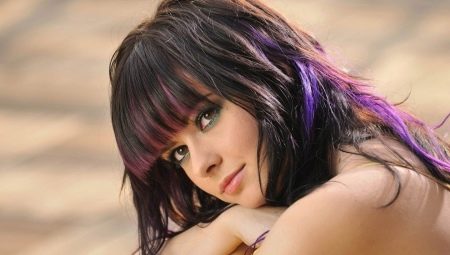
Every woman has a desire to change her image, add original nuances to her look from time to time. And you don’t have to radically change your wardrobe, makeup or hairstyle. Sometimes it is enough to dye your hair, and not completely, but in separate strands, in order to refresh the image and cheer yourself up.
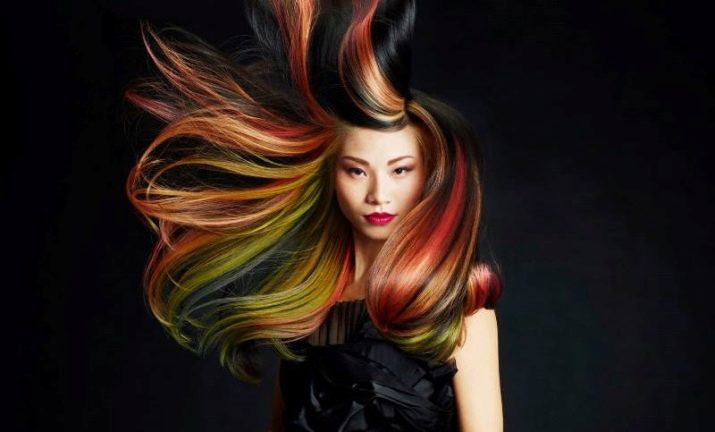
Peculiarities
There are many products for dyeing hair - from natural gentle to the most persistent chemical dyes. The choice will depend on the ultimate goal. If you need to create an image literally for one exit, then you can use products that are quickly washed off. To achieve a long-term effect, persistent formulations will be required. Let's consider several options.
- All special chemical paints will last longer., of course, if you choose a quality product from a well-known manufacturer. The palette of shades here is the widest, you can find suitable for any type and color of hair.
It is necessary to use such formulations clearly in accordance with the instructions attached to the painting set. But in any case, they act quite aggressively, and the curls after staining will need careful care.
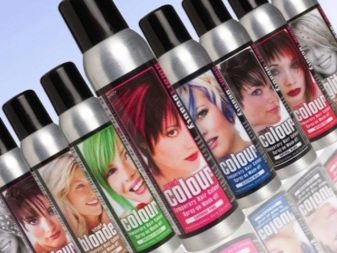
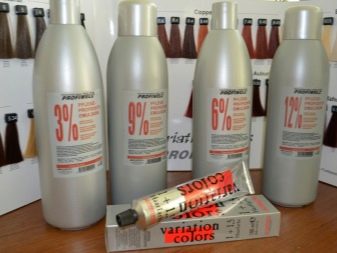


- Good options are natural henna and basma dyes, as well as folk remedies: coffee, beets, onion peels, nettles, chamomile and others. They do not spoil the hair, and even have a healing effect, but the effect disappears after several shampooing of the head. And the choice of shades is very limited here.
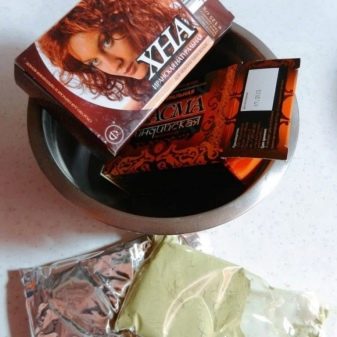

- Temporary staining of strands can be done with crayons. This provides room for experimentation, since the color is washed off immediately if necessary (if you do not take an oily material).
But when exposed to rain, this property will clearly not please, and you should not use crayons under headdresses.
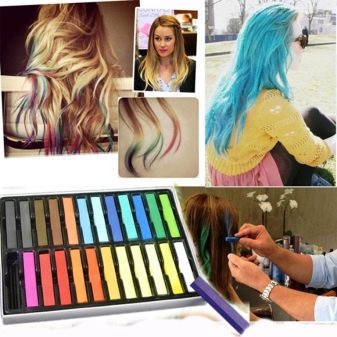
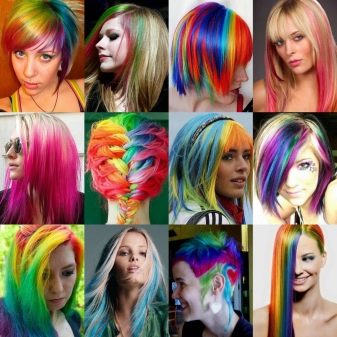
- Colored strands obtained using tinted shampoos and balms, also last for a short time, but they practically do not harm the hair. This paint is washed off in 2-3 times. These colorants are available in the form of tubes with mascara, and in the form of a spray, which is very convenient for application.
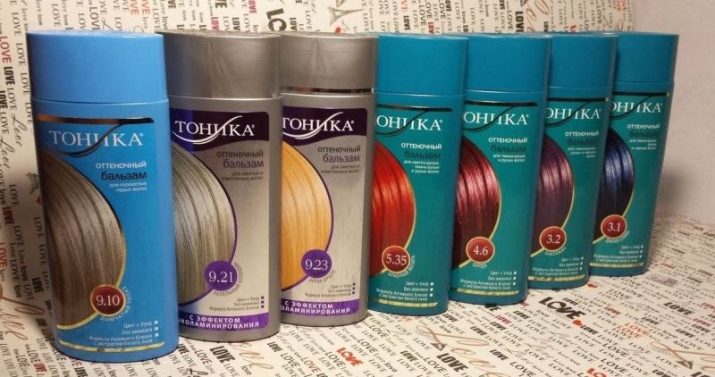
The main way to paint individual strands is highlighting. The pioneering use of this technique is attributed to the French hairdresser Jacques Dessange. It was noticed that the natural hair color is almost never uniform, and the play of tones in the strands makes the hairstyle more voluminous.
Initially, small strands were lightened over the entire surface of the head, trying to achieve the effect of curls burnt out in the sun. In the future, several types of highlighting appeared.
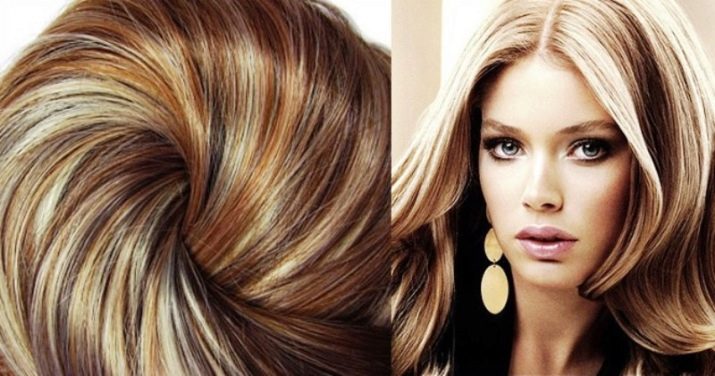
Ombre
In this technique, dyeing is performed along the entire length of the strands with a gradual lightening in the direction from the roots to the ends. In this case, most of the hair is dyed.
But ombre is not suitable for ultra-short hairstyles, and it is also not recommended to use it after using natural dyes (basma, henna).

Sombre
This is a technique similar to the previous one, but in this case, individual strands are painted at a noticeable distance from each other. They also gradually lighten along their entire length. This method is very suitable for thick hair.
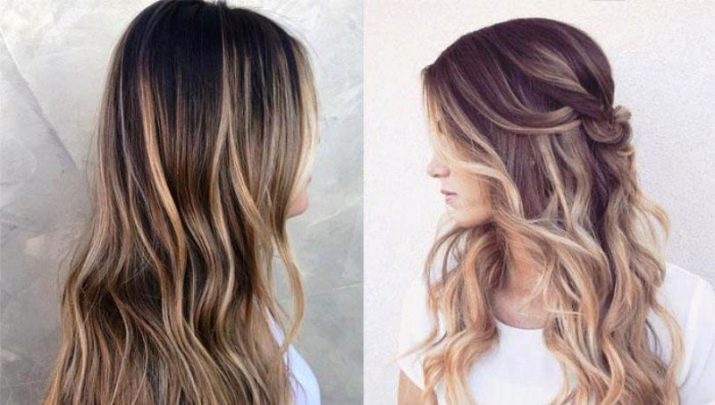
Balayazh
When using this option, the strands are colored not from the roots (up to 2/3 of the length). Sometimes only the tips are painted. The color transition from top to bottom can be either from dark to light, or vice versa. But the first one looks more natural.
When the hair is brittle, with split ends, balayazh should not be used, as this drawback will be even more striking.


Shatush
In this method, the color gradation is created horizontally. Such coloring looks spectacular on dark hair, but it is not recommended for blondes, since it will simply not be too expressive. For masking gray hair, if it is more than 30%, it is also not suitable. The advantage of this option is that good results are achieved with the use of natural dyes.
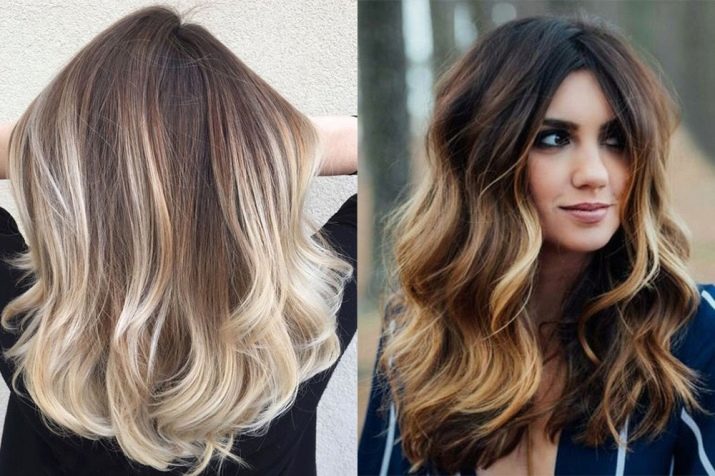
Bronding
With this highlighting, several colors are used, but within the natural palette. Experienced craftsmen manage not only to achieve the effect of burning out strands in the sun and give them additional volume, but also to add shine to curls with the help of a play of tones. This method allows you to make your hair visually healthier, it is optimal for masking gray hair. Strands can be dyed both along the entire length, and partially (like a balayage).
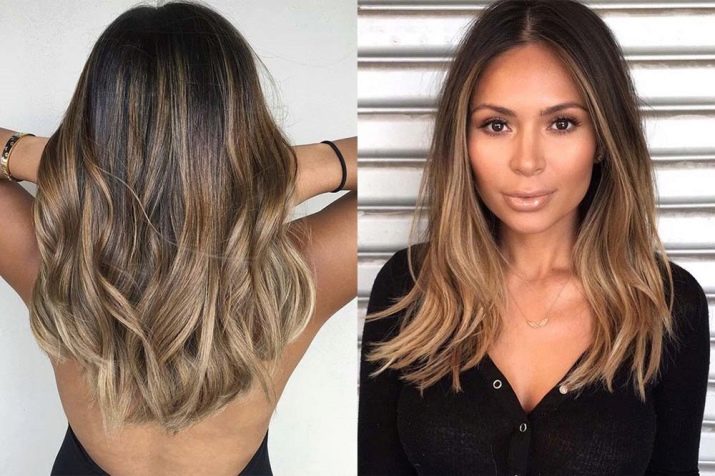
French toning (majimesh)
A method involving the use of wax-based dyes that tint the hair without strong lightening. Due to this composition of funds, this procedure is considered one of the least harmful to hair. Strands are dyed more often in several tones, but there can be monochromatic options. However, on dark hair, the dyes used in this technology do not give a noticeable result, therefore mazhimesh is recommended only for girls with light blond curls or blondes.
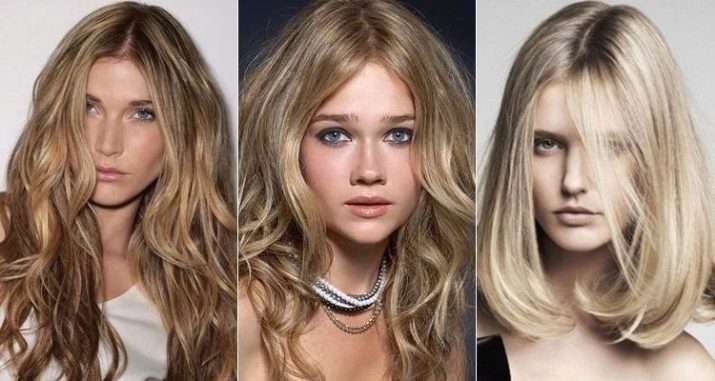
American
In this embodiment, several tones are used (usually up to 5). Until recently, the palette included shades ranging from golden to bright red, as well as reds and chocolate brown, close to natural. But now you can find such coloring and using bolder colors, for example, blue-green gamut. This highlighting is more suitable for women with dark hair.

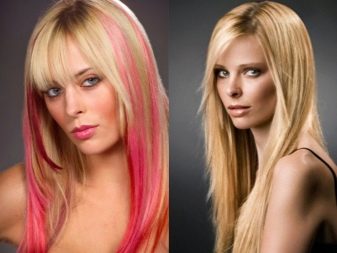
Crazy colors
The name of this type speaks for itself, any experiments are allowed here. Bright contrasting colors are used to make individual strands stand out clearly. Sometimes even graphic images are created: stripes, circles, waves. Hair can be of any length, even very short.
The selection of shades will largely depend on the taste and preferences of the master and the model, but so that the hairstyle does not look vulgar, a large number of multi-colored strands are usually not made.
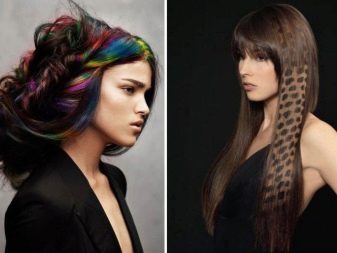
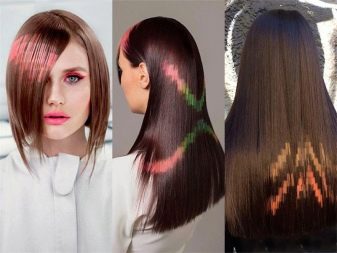
When choosing the type of staining, there are several points to consider:
- condition and type of hair;
- colored or not, what dyes were used in the first case;
- hair length and color, type of haircut;
- condition and skin tone.
But in any case, dyeing hair with strands has one indisputable advantage: the growing roots are not very noticeable, especially if they are not painted over the entire length. And such staining has to be corrected less often than radical.
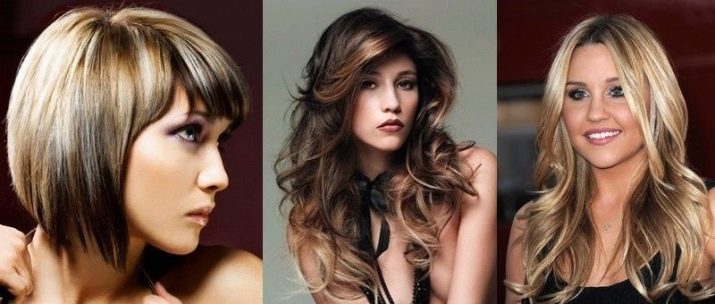
To perform a certain type of highlighting, observing all its features, some skills will be required, so it is better to contact a specialist.
But you can try to dye one or more strands at home. It is only important to choose the right tone.
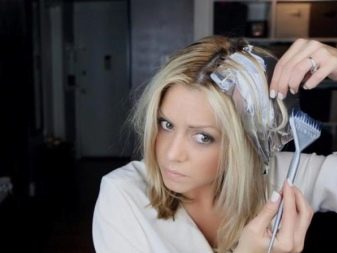
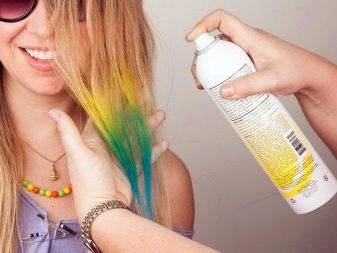
Choice of shade
Both when determining the color of clothes and when choosing a shade of hair, experts advise focusing on the color type. That is, a warm skin tone (golden, beige or dark) suggests the use of a similar range of colors for strands. "Aristocratic" pale or porcelain - the choice of cold shades.
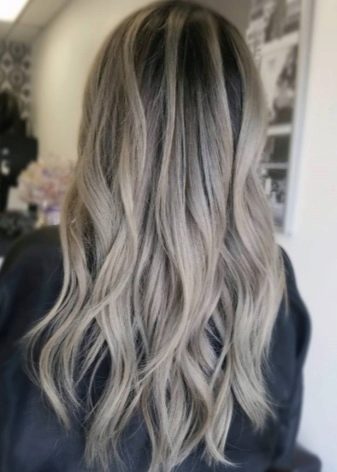
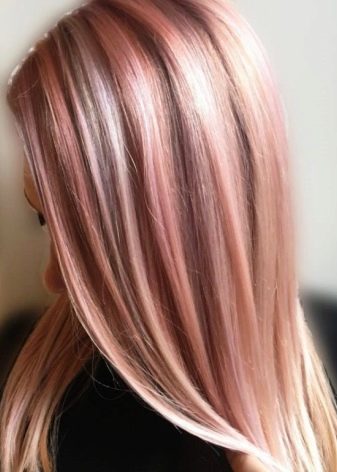
Sometimes it is problematic to accurately determine your color type, in this case three tips will help.
- You can focus on the color of the veins. If their shade is greenish, then the skin is warm, blue or lilac - cold.
- The eyes can also tell, or rather, the color of the iris. Blue or gray eyes - cold color type, brown - warm.
- Evaluate whether gold or silver matches your skin better. For this experience, it is not necessary to take jewelry, you can also jewelry made of metals of similar colors. You need to consider them in daylight. If gold is more suitable, your shades are warm, silver is cold.
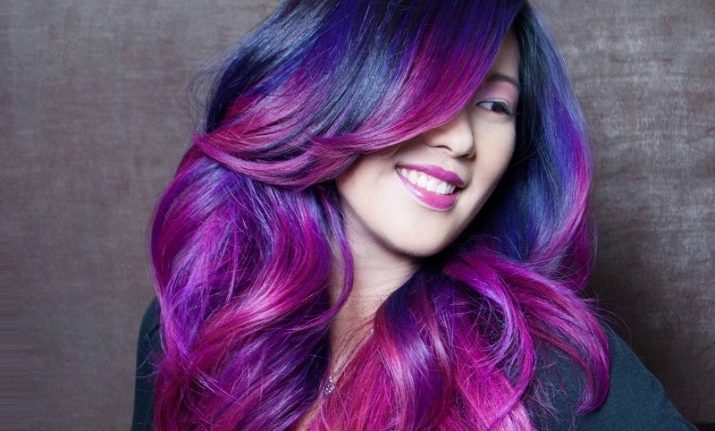


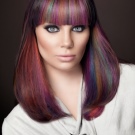
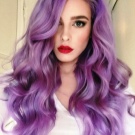
To make the hairstyle look natural, experts recommend choosing tones that are close to the natural hair color. If you want to create an extravagant look, you can try bright colors.
For dark hair
The palette of colors for brunettes is wide, all "tasty" shades are suitable for them: coffee, chocolate, caramel, walnut. But this is provided that the skin is dark and the eyes are brown. Owners of a cold color type should experiment with eggplant or blue shades. It's no secret that pure black hair color adds some age to their owner. And dyeing with strands will be a good way to "rejuvenate" a little.

For light (blond)
Platinum, silvery, ash tones are suitable for blondes with white skin. You can try the colors of wheat or champagne. If you want to add bright strands, then it's still better to take cold shades, for example, pink. Honey, golden, caramel colors will adorn fair-haired girls only if their skin is warm.
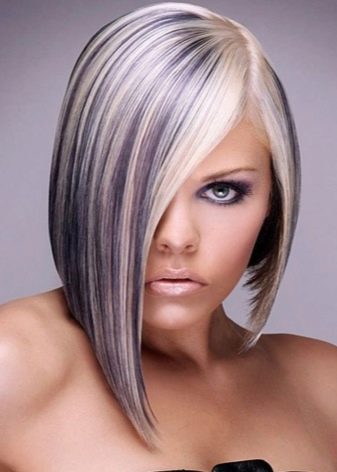

For redheads
Chestnut, fiery, nutty shades will make the already bright red hair even more spectacular.
Many are attracted by the red color in their hairstyle. In fact, it comes in many shades, both warm and cold. That's why almost any woman can choose her tone and add at least a minimal amount to her hair color. But you need to handle it carefully.
If there is a lot of red, it is able to draw attention to skin imperfections.
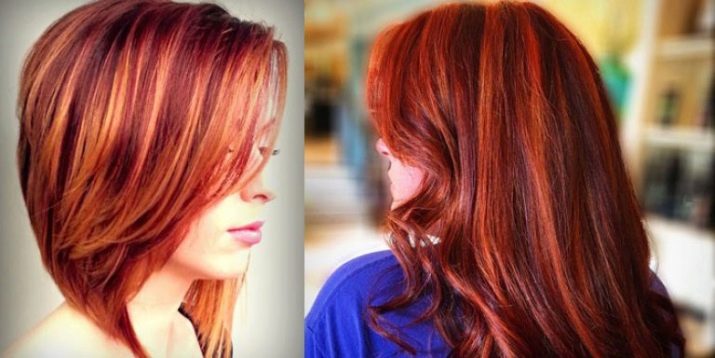
How to paint at home?
It is unlikely that you will be able to create complex tone transitions on your own, but it is quite possible to dye the strands using 1-2 shades if you carefully follow the recommendations. It is most convenient to carry out the procedure at home using a special hat. If there is none, a shower cap will do, then you will need to make holes in it.
- Persistent dyes won't wash off your clothes, so put a diaper over your shoulders or just put on an old T-shirt.
- Dilute the paint following the instructions provided.
- Put the hat on your head.You do not need to wash or moisturize your hair before dyeing.
- The strands are crocheted through the holes. Each is individually painted over with a brush in the direction from the roots to the tips.
- The paint is kept on the hair for 20-40 minutes. You should focus on the time indicated in the instructions, and the natural color.
- Then the hair is washed thoroughly. For the care and restoration of the strands, it is recommended to use a special balm after dyeing.
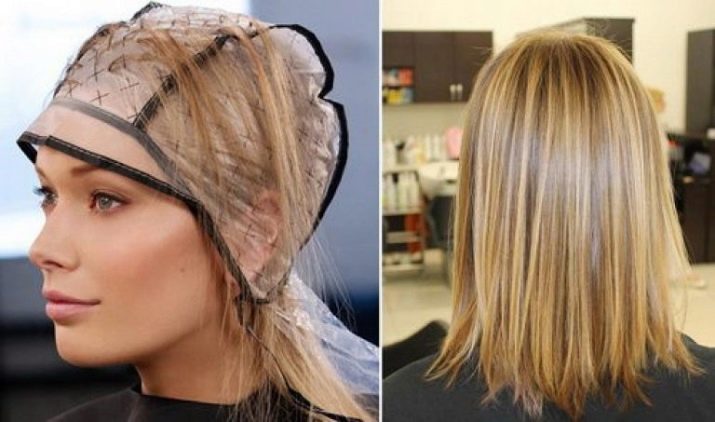
Instead of a hat, you can take ordinary cling film. In this case, the strands are fixed with rubber bands in the place to which they will be painted. Hair with applied dye is wrapped in a film. Sometimes foil is used, but experts do not recommend using it for home staining., since oxidation and heating processes can occur inside, which can not affect the result in the best way.
If the hair is not very long, and there is neither time nor experience for thorough dyeing, you can use a conventional comb with sparse teeth. Paint is applied to them and the strands are properly combed. The result is quite interesting.

Another important nuance: dark strands should be lightened before dyeing.
Beautiful examples
Different options for coloring with strands are presented in the photo gallery:
- ombre dyeing on dark blond hair;
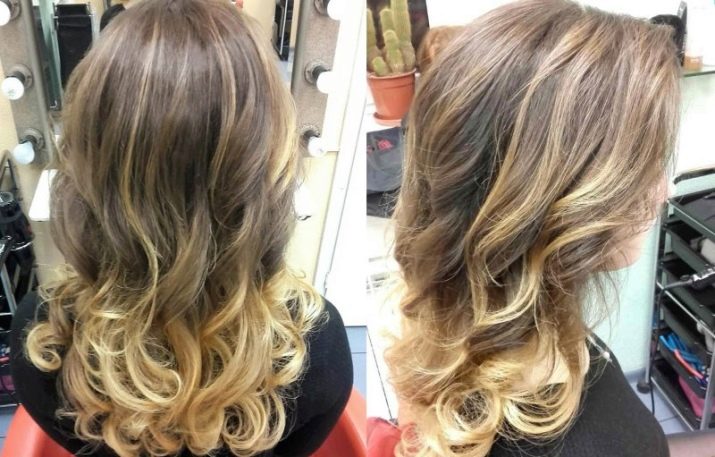
- chocolate and caramel shades look very natural on dark curls colored like a sombre;

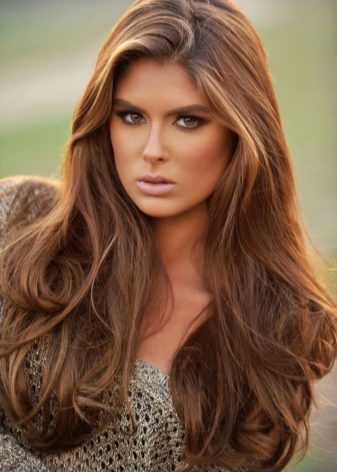
- balayage revitalizes hair of any type and color;
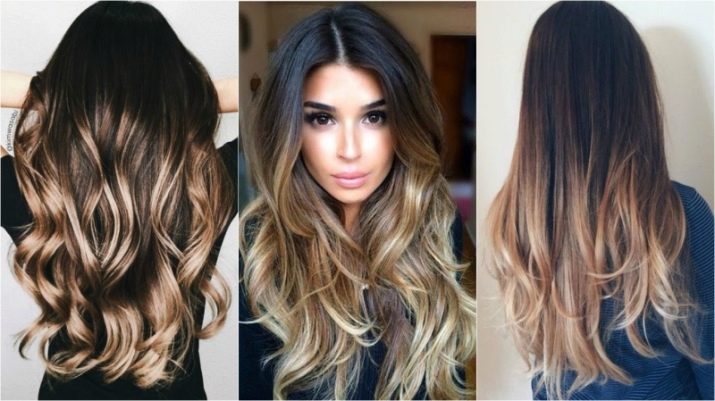
- shatush gives shine to dark hair;
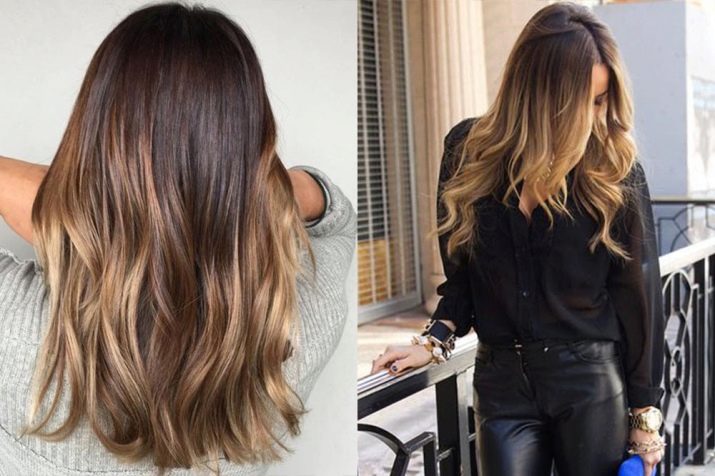
- overflow of shades using the bronding technique;
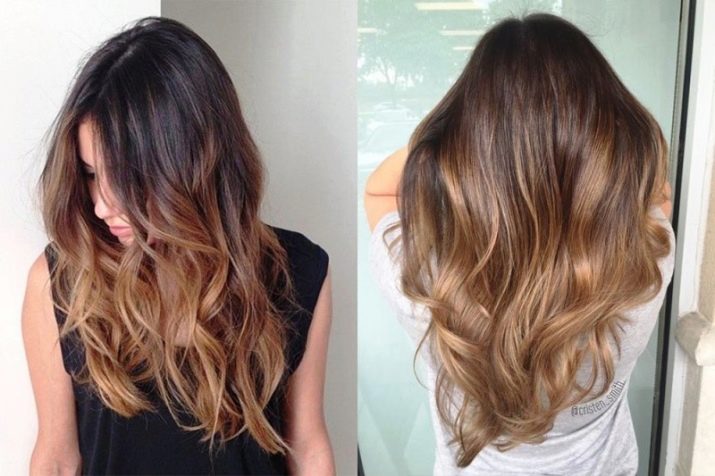
- mazhimesh - ideal for blondes;
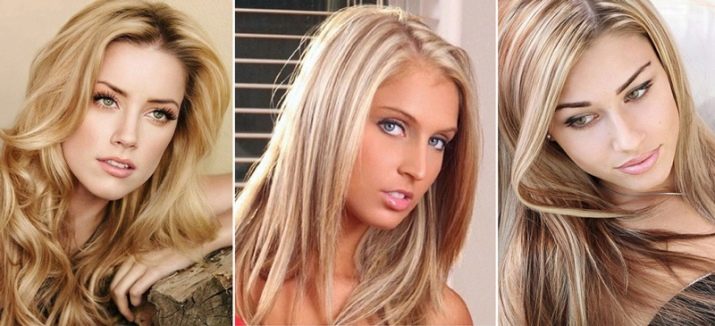
- bold colors in the American highlighting technique create a vivid image;
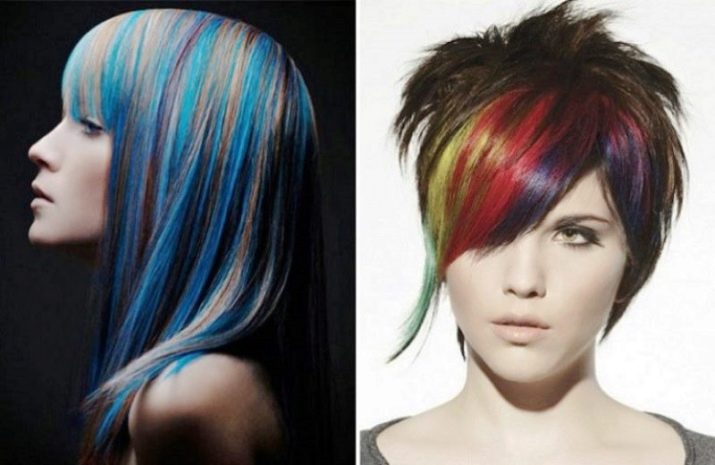
- crazy colors highlighting is a technique for the most creative.

For information on how to dye your hair with strands, see the next video.








